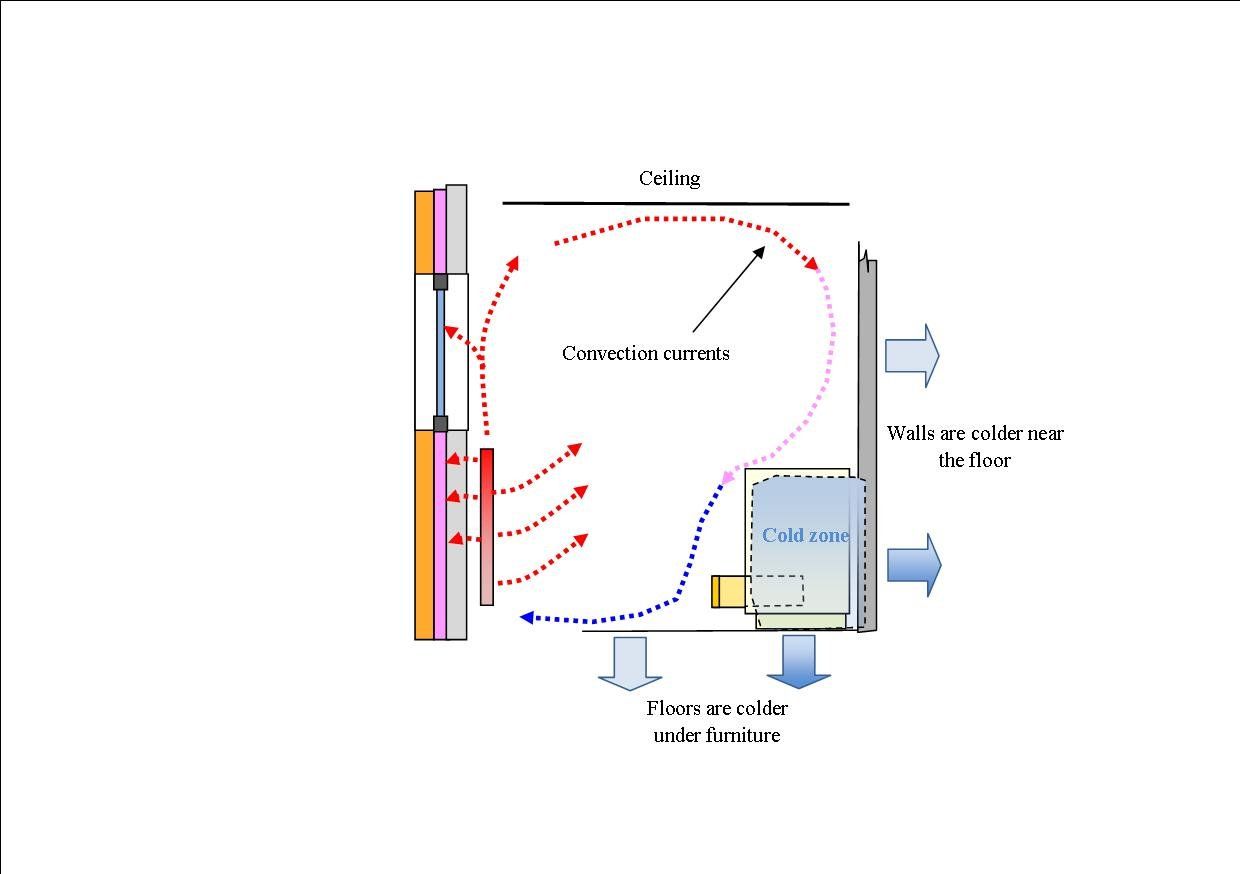How do I stop Condensation
6 easy steps to reduce condensation on the bedroom windows.
‘Why do I get condensation streaming down the bedroom windows in the morning? Where does it all come from?
Mostly
breathing and as a result of bathing. Moisture from breathing is easy to prove
but it might be a surprise just how much water one adult produces.
If the air is cold you can see breath condensing in the air. But we also breathe through our skin. More accurately we expel water vapour through the millions of holes in the skin. The vapour condenses (sweat) and the water then absorbs heat cooling us down.
When we sleep our body temperature needs to cool down by about 1 or 2 degrees. To cool down whilst feeling cosy in bed means expelling water vapour – sweat. It mostly soaks into our PJs and into the bed linen, covers and mattress.
‘How much water are we talking about?’
Weigh
yourself before you go to bed. (Ideally in kilograms as it makes the
calculations easier). Then weigh yourself when you first wake up. You will be
about 0.3kg (300g) lighter. (If you have been to the loo in between times the
calculation will be void).
300g of water has left your body in about say 8 hours of sleep. 300g is the same as 300ml or 0.3 litres and that is as water, not water vapour. 1 adult has produced just over ½ pint, (a mug full).
If your home is occupied all day you will have put about 1½ pints of water, (not water vapour) into your home per 24 hours.
Now add bathing. Having a shower will put more vapour into the air as mentioned in the previous blog.
Try this
when you next have a shower: Weigh the towel/s you will use before
you
dry yourself and then after you dried yourself. 1 gram increase will be the
same as 1cc of water absorbed into the towel. There are 1000cc in a litre
(technically at 20°C).
As a rough guide 100 grams of water is about 0.18 pints.
If you have long hair you’ll probably use another towel around the head. Check the amount of water it absorbs.
Does this sound familiar?
You’ll
probably go into the bedroom to dry your hair. Probably leave the bathroom door
open. Then use the hair drier to dry your hair.
(You could do another experiment; weigh yourself before showering and then again after showering. The amount of water your hair will retain is actually quite a lot depending how long and how thick etc.).
Now you have damp towels and lots of hot humid air that the hair drier has created whilst drying your hair. Add that to you breathing all night and putting about ½ pint (a third of a litre) of water into the room. Plus the cooler humid air has rolled out of the bathroom across the landing and into the bedroom, down the stairs (if in a house).
All that vapour condenses on cooler surfaces to become water.
You'll probably have the heating on during the day so the water molecules in the air (vapour) become energised and collide with everything. The collisions are kinetic energy and the result is heat.
You have heated the air and that air will heat everything it is in contact with. The molecules in the air will also attract the water molecules that are in the wet towels and in the bed clothes, mattress and so on. That is evaporation and heat helps the process.
The air in the room is now buzzing away merrily. Warm air can hold more water vapour molecules as the air molecules have more energy to move. The solid walls hold the air in so the result is a rise in pressure.
(A previous blog goes through how the molecules pack into space. The more molecules in a given space means the effect of gravity increases. Humid air has more molecules per unit of space. They are packed in = the air is denser = heavier).
The day
has ended, Sunlight no more so draw the curtains and keep the heating on. The
air is holding a lot of vapour whilst it is warm. A design temperature for a
bed room is 18°C. The idea is it help your body go into sleep mode.
Later the heating turns off and the room temperature gradually cools down. Probably at around 3am it becomes as cool as it will get, about 15°C.

The windows are probably much cooler outside than that. Say a cold night at 3am 5°C.
That means any air in contact with the window inside that room will be cooling down much faster than the rest of the room.
If your windows are double glazed the spacer bar (the older ones were aluminium. Modern ones are plastic) will transfer the heat energy even quicker. That is why you see a halo effect where the condensation is all around the edges and more so near the bottom of the window.
If the air is very humid (holding lots of water vapour) then there will be more condensation.
If the outside temperature is very low, less than 5°C then it is likely that the whole of the window glass area will have condensation on it. As more vapour condenses the amount of droplets become too much for the glass to attract. The result is the water streams down the glass.
The water soaks into the wall, soaks and stains the wall paper, soaks into the plaster. The emulsion paint discolours and the dreaded mould spore start to multiply. The back of the curtains, nets if there are any, and the wall below the window all become damp and go mouldy.
Okay, I don’t suffer with insomnia - How can I get rid of the mould and condensation?
1.Keep the extractor fan running for about 30 minutes after you have finished the shower.
2.Keep the bathroom or en-suite door closed or only just open (12mm or ½” max) to keep the humid air in that room. The extractor fan must be working efficiently though. (see below what was found in a pipe behind the ceiling grill).
3.Put the wet towels back into the bathroom as soon as practical and hang them up to dry off. If you don’t have a towel radiator then hanging them over the shower rod or washing line if available. The worst thing is to hang them over the bedroom door or landing handrail if there is one.
4.Leave the bedroom door open after you have finished in that room. Air needs to circulate to mix up the gases. If you have been sleeping in that room possibly with the door shut all night the mixture of gases will have changed. You have used some of the oxygen and produced carbon dioxide, a bit of methane and added to the water vapour.
5.The bathroom door can also be left open after about the half an hour delay. Air circulation is very important part of lowering the humidity levels.
6.If the room has ‘trickle vents’ or you don’t mind having a small window open for a while it will help with the gas balance change over. Ideally a dwelling should have the air changed about once or twice an hour (as if that’s going to happen).
Those 6 points should significantly reduce the amount of condensation running down the bedroom windows.

There are other factors though.
That was one adult in the dwelling. Multiplying by the number of adults and change the life styles.
Here’s another:
Tracy and Roger are a young couple who both go out to work full time.
They live in a two bed apartment in a high rise block. They leave for work at 6:30am and get home about 7:00pm.
A typical day starts about 5:45am, quick shower each, towels draped over the bedroom and bathroom doors to dry. Shower tiles and bath left wet. Shower curtain all wet too. Shut all the windows and lock the doors and off to the station.
The heating is timed to go off at 6:30am and come back on again at 6:30pm ready for when they arrive home. They have an automatic washing machine but no space for a tumble drier.
They have a clothes horse and the washing out the machine is draped over that as it stands in the kitchen to dry off. Mainly shirts etc. and most of the other clothes go to the dry cleaners.
Mould and condensation are a problem.
Clothes in the wardrobe and the bed linen are beginning to smell musty. They have recently found a pair of leather boots bought only a few months ago have mould on them. They are now ruined and a throw away job.
The ceiling is the dense concrete floor of the apartment above that has been Artexed over and painted white. Heating in the apartment is by electric heaters in each room. The walls are poorly insulated and the windows have just been replaced with double glazed Upvc windows.
Although they both earn good money they are spending a fortune on replacing clothes and furnishings and trying to heat the apartment.
Can anything be done to reduce the condensation and stop the mould?
Yes is
the simple answer. A small machine the size of a small suitcase should sort
most of the problems out. Dehumidifiers have been around a while. Some are noisy
and don’t actually do a lot.
When I was at the College I had equipment to actually test a machine in a ‘wet lab’. This particular machine is now Mk5 but is really good.
EcoAir DD1 Classic MK5 Desiccant Dehumidifier. It can be bought for under £180.
Why that machine in particular? It has a laundry mode. Leave washing on a clothes horse in the kitchen and almost shut the door. The machine needs to be relatively close to the washing but not touching it. The laundry mode blows warm air onto the washing and sucks air in through a filter near the base of the unit.
The filter helps catch particulates that are pulled in and the air then passes over a silver filter. Silver is known to kill bacteria and that includes mould spores. It isn’t likely to be 100% efficient but any reduction of mould spores is a good thing.
The humid air (being drawn in near the floor level) passes through a desiccant system.
'My friend has a dehumidifier and it’s noisy and doesn’t do a lot. They’re rubbish!'
By the sounds of it they have a compressor type as opposed to a desiccant dehumidifier. There is a lot of difference. Compressor types are noisy. It’s a bit like the compressor on the back of a fridge.
Compressor dehumidifiers work on a basis of cooling rods and the humid air is blown over them to condense the vapour into a tray below. They are only efficient over a narrow air temperature range.
In contrast a desiccant dehumidifier uses crystals that absorb vapour from the humid air and then dries it off as water (hang on that sounds daft – how can it dry it off as water?)
Without going in to it too technically that is what the machine does. The humid air goes over a wheel covered in crystals and they soak up the moisture. The wheel rotates and warm air is blown over the crystals to dry them out ready to repeat the task. The warm air passes over the silver and through an ioniser before being blown out of the oscillating grill at the top of the machine.
The machine is very quiet (there is no compressor). The manufacturer state 34dBA. That means decibel audio. The ‘A’ is the range that humans can hear. Background noise is about 40dBA so it is very quiet.
The laundry mode is when the machine is on full power. Full power is 620W. Compared to a tumble drier that is about 1.7kW at full power the dehumidifier uses about a third of the amount of electricity. Yes you don’t get ‘owt for nowt’,
The dehumidifier will be on for longer than the tumble drier. It will actually dry more clothes than the tumble drier at one time. However on test it used less electricity to dry more clothes than the tumble drier.
The machine will
pull up to 2 ltrs of water out of a building and then turn off ready for
emptying. If the washing is dry and the relative humidity is just above 30%
then it automatically turns off.
It is ideal for Tracy and Roger. It can dry the washing whilst they are at work. If they leave it in the hallway and the bathroom door and all the other internal doors are left open it will dry the whole apartment out. It will take time though.
The first few days will really take the water out. They may need to leave it on all day, empty it when they get home and turn it on again to run through the night. Empty it in the morning and on again for the day. (If it is on laundry mode it uses 0.62kWh or 0.32kWh when used normally).
It'll cost a fortune though?
Not really. A kWh is about 15p. (hours x days x kW x £/kWh x weeks) = (24 x 7 x 0.32 x 0.15 x 1 = £8.06) That would be the cost if the machine is left on 24 hours a day for a week. There would be an offset cost as the other electric heating will not need to be on as much.
Yes it will use some electricity but the benefits far outweigh ruined clothes, smelly clothes, and damp furnishings that allow mould to grow. After the initial drying out of the apartment the dehumidifier only need be used to dry off the washing and an occasional use if the problems return.
Another gadget that Tracy and Roger may want to buy is an RH gauge. For about £10 the small electronic meter will indicate the relative humidity of their home. It is unlikely to be very accurate and in reality it doesn't matter too much. The meter I use on surveys costs several hundred £ so it should be accurate.
The idea is to occasionally check the RH against the temperature. The RH can be high at say 24°C and no problem with condensation. However when the temperature drops at night (3am is typically the coldest time) condensation could be streaming down the windows. A rough target is about 30 to 35%RH at about 20°C. If it is about 70 or 80%RH at 20°C there will be a problem.
Next week’s blog we’ll look at the heating.






